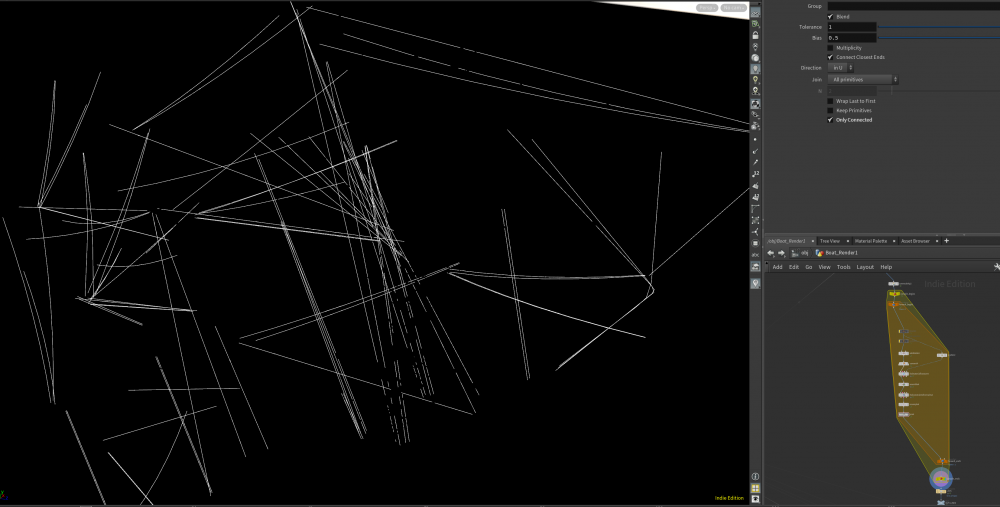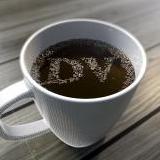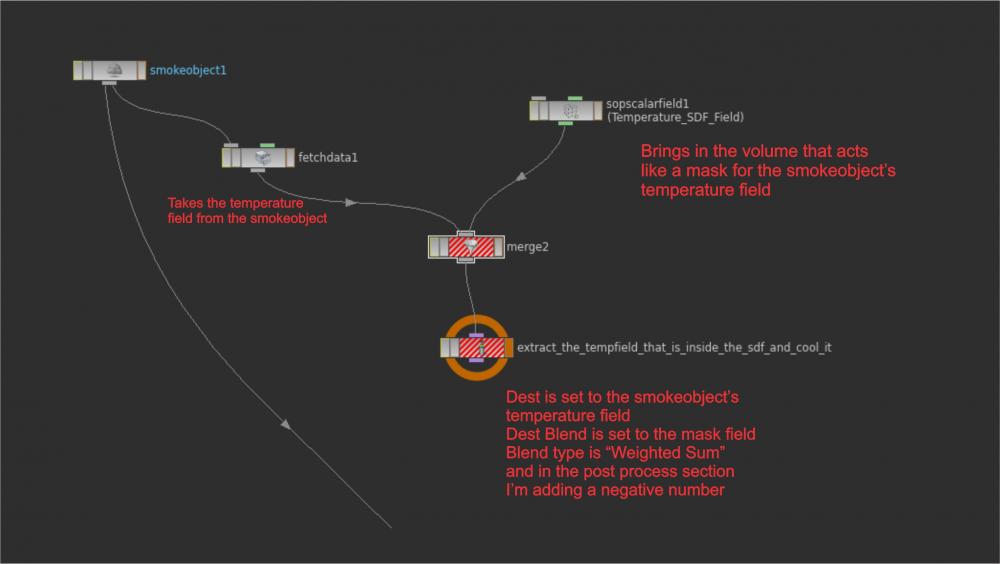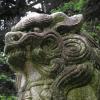Search the Community
Showing results for tags 'CONVERT'.
-
Hello. I was wondering, is it possible to convert already packed and instanced geo from a copy to points sop into an Arnold readable packed geo type that I can export to an .ass file? Thanks.
- 1 reply
-
- arnold
- packed geo
-
(and 3 more)
Tagged with:
-
Hello fellas, I have been trying to create a simple shape using the curve sop and then the intention is to convert to mesh, extrude it and use the ray sop. However, once I convert the curve to mesh, some of the polys on the new mesh overlap each other. I have been trying so many ways to solve this but so far I haven't succeeded. Attached are the images showing what i'm seeing here. Any help is much appreciated. Thanks!
- 11 replies
-
- convert
- overlapping
-
(and 2 more)
Tagged with:
-
Hi guys, may I ask for a quick way of converting geo tubes into straight splines? ATM I'm abusing the fracture tools to generate single constraints withing the center of mass and a join afterwards. Kinda works but wth some flaws. A few lines show discontinuities/breakups. Disabling "only connected" on the join node adds quite a few new splines what I dont want. So is there a quick and dirty way of getting to some fine splines? Some node I dont think of? An alternative would be looking for points with a neighboutcount < 2 which are not at the max or min of curveu and connect them - or something like, I guess.
-
Hello! Thanks for come here. I want to know process of converting from 3D modeling to 2D with mantra render. (I mean i want see python code or parameter..) because I'd like to get the object's minimum and maximum value of x,y coordinates on Mantra renderer (you can see picture). how can i do?
-
What should I do to move houdini particle attribute(ex: motion blur, pscale) to maya redshift? I made particle in houdini to rs and moved it to maya redshift
-
How is it possible to convert a single volume, to 3 volumes (velocity) I have shaped form that I am converting to a volume. I then need to convert that volume to vel.x vel.y and vel.z, to create a velocity field of. it is not optimal to just create a bound and then convert it via a "Volume" node, because I need to keep the original shape.
-
Hi, I have some basic question. How to convert a glossy reflection file texture to a rougness map using principle shader?... I know its the invert of it. I tried different things... add a minus to the roughness slider at the top level (didnt work) Allow edit of content -> Adding a invert Node to the roughness node (gives a red "!") Allow edit of content -> multiply by -1. (gives a red "!") thnx
-
Hello All, I am using VDBs to combine geometry and I am interested in a way of maintaining specific attributes from the two input geometries. Currently I have two poly objects which are being converted to VDBs and then combined using VDB combine and then converted back to polys using VDB convert. What I want is to be able to identify which polygons on the resulting combined/converted object comes from which input object and also maintain their respective UVs. I have had some success with using the second input of the convertVDB node to transfer attributes. Using this method however, I am only able to maintain some of the objects attributes, not all. I've attached some images and a file to demonstrate my issue. In the attached file I have three objects; Base, Add Sphere and Sub Sphere. All objects contain UVs and an ID attribute (tmp1), they are all converted to VDBs then combined using VDBcombine nodes. Finally the resulting VDB is converted to polys using convertVDB. When both original sphere are input into the second input, the UVs and ID attributes are transferred correctly however the Base object is not. When all three objects are input into the second input of the convertVDB, only the Base and one sphere's attributes are transferred correctly. I have tried several different combinations and methods of making this work to no avail, but it feels like I'm so close if I can get all three objects to transfer the attributes correctly, just not all at the same time. It is possible to use two convertVDB nodes, one with the two spheres in the second input and the second with all three objects in the second input, then deleting the problem polys from either (using the ID attribute) and then merging the two together, but this is not very ideal. In the image on the left you can see the results of the convertVDB using only the two spheres as the second input, the middle image is when using all three objects (base, add_sphere and sub_sphere), and the right is an image of all three input objects showing their UVs. I am new to VDBs so I was hoping someone might have some alternative methods or could point me in the right direction. Thank you all in advance! Cheers, -Mat VDB_attributes.hip
-
Hello everyone, I've been getting into DOPs recently and i just cant figure out something. I have a SmokeObject and an RBD object. They are both plugged into the Pyro solver. The smoke has a collision relationship with the RBD object, and the Pyro solver's option "Temperature Merge" is set to "Collision Interior". In order for the "Temperature Merge" to happen the RBD object has to have a temperature field. Now what i want is for the RBD object's temperature field is to be just like what the smoke's temperature is but subtracted by a number so that the RBD object is always cooling the smoke. I've Created a fog volume that consists only of value 1 voxels inside the RBD Object and value 0 voxels outside of the RBD Object. I'm planning on using this as a mask for the smoke's temperature field (multiplying these two fields) and then lowering the value for all the kept voxels. Now i don't know what is the best way of achieving this but i thought that I can bring in the mask field (the only 1 or 0 field) into the dop network using the "Sop Scalar Field Node" and then extract the temperature field out of the SmokeObject using the "Fetch Data Node", wiring these two into the "Gas Calculate Node" and then blending and doing post subtraction in there. I don't even know if that is the right way to do it, but anyway once I connect the scalar field (the temperature mask, brought in from sops) into the gas node everything is ok. Once i plug in the data (SmokeObject's temperature field) into the gas node it reports an error saying that the connection to the fetchdata node is the wrong type. How could this be? Both the "SopScalarField" and the "FetchData" nodes output data, how come that the gas calculate will accept data coming from the "SopScalarField" node and not from the "FetchData" node ? I've been trying to resolve this for a while now, if anyone could help out it would be greatly appreciated
-
hi first post here and i'm still new to houdini coming from softimage. i was wondering if there is a way to convert lidar data (.las) to geometry (polygon). there is very little documentation on the lidar subject so far and maybe someone has some insight how to handle lidar in houdini. any pointers are much appreciated thank you
-
Hi guys, I need to export some hair as alembic but it's not as easy as it looks like. I think it need to be converted to geometry first. Do you guys have any idea on how to proceed?
-
Hello, I want to convert node's name to uppercase with On Name Changed event. So I tried this code node = kwargs["node"] name = node.name() node.setName(name.upper(), True) But if I try to rename the node, I get error Unknown error when generating backtrace. And the name is converted to uppercase but from node abc becomes node ABC498 Not sure where this 498 number and error come from. I guess I am doing some beginner mistake. Thanks, Juraj
-
Hi. Like the title says. Or should I go and find someone with full Houdini version to convert it myself first?
-
Hey all So quick question. Has any body been able to convert bgeo to prt? I've seen a couple PrtRop Driver nodes floating on the net but unfortunetly I cant seem to find a version for my Build of Houdini. Running Version 13.0.376 far as I understand its a VC11 build and the PrtRops i've found are VC9 builds. Reason is I need to port particles to Max/Maya to render in Krakatoa,but need to make sure my Colour,Velocity and Position channels are intact. Does anyone know if there's a script or anything that can convert bgeo to prt and were can I get my hands on it. BTW I have no scripting knowledge Thanks guys
-
Hello, I'm using Hscript for some paths in Houdini and some of the global variables on windows are coming in as Backslashes \ and for some uses I need them as Forwardslashes / in Houdini and \ backslashes outside of Houdini. Is there a way to change the forward slash to a back slash? Unfortunately backslash is an escape character... http://www.sidefx.com/docs/houdini13.0/commands/_guide#idm47064707811440 Example C:\Windows needs to be C:/Windows As silly as this is in order to convert the other way this is the method i have, but doesn't work in the reverse `strreplace(strreplace("C:\Windows","/","\ ")," ","")` Thanks -Ben Edit: mistyped forward instead of back
-
Hi, I'm new to Houdini. (it's been almost 2 months now...and i have a question...) What I'd like to know is that, is there any way to export fractured and simulated scene as separated alembic files(original, proxy) at once? ----- What I'm doing now is that fracturing wood watchtowers in houdini, then exporting back to Maya as .abc files for additional cloth and ropes simulation inside Maya. Due to the large scene size, I have to make "proxy objects" of wood watchtower using proxy_primgroups_qL node, then export another .abc files. (it's used for proxy rigidBodySurface / dynamicConstraints for ncloth, and seems faster if I made another .abc file just for proxy. not including everything.) However when i came to exporting stage using ROP as I attached image, I realised that i have to simulate twice(or more) and i'm thinking it is time consuming. Any help would be greatly appreciated. (including the answers of "No you can't!! Batch it when you go home",too! ) Cheers, kobataro
-
I keep getting weird read errors from this alembic file (I got it to mostly work and I'm talking to support, so don't worry). I'm old and crotchety and suspicious and superstitious, and this reminds me of several instances of being in a pipeline and converting published geometry to native geo in Maya to get it to work.... anyhow... How can I take an animated Camera from an imported Alembic file and bake it out to a Houdini native camera? Baking out the geometry is easy enough, but if I bake out the geo from the camera I only get the nice two-reel icon of the camera, not the actual camera object. I'm sure Alembic works just fine for most of all y'all, touch wood, but if anyone has a clue I can borrow I'd appreciate it as I'm fresh out. I'm attaching the abc file I'm working with as a zip because the attacher here doesn't like .abc files, fwiw. track_03.zip














